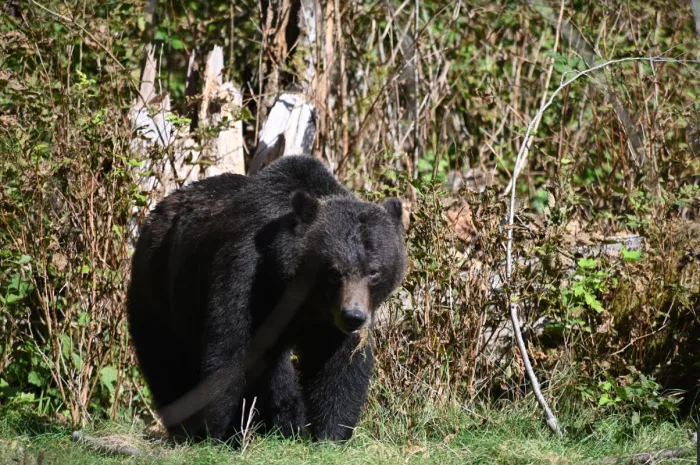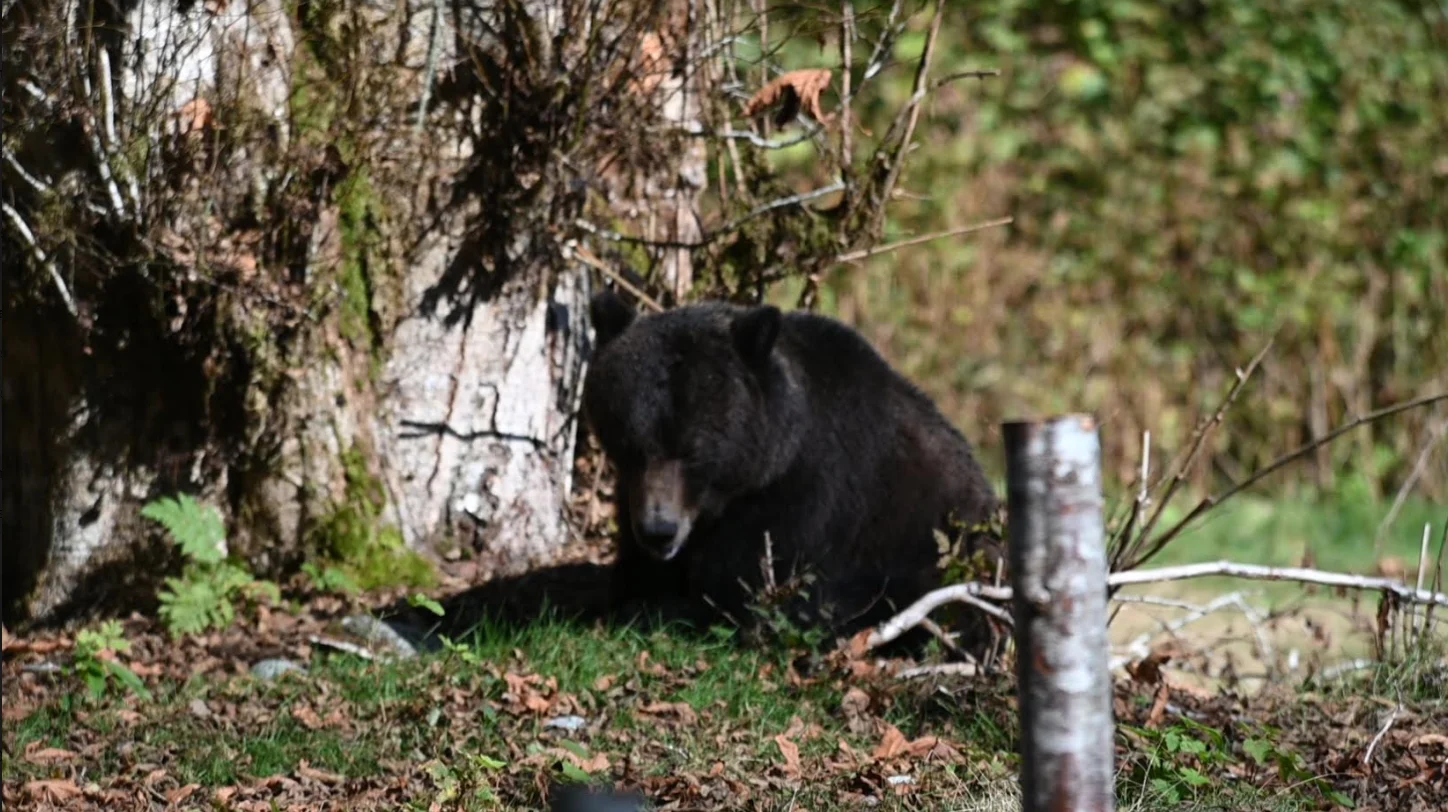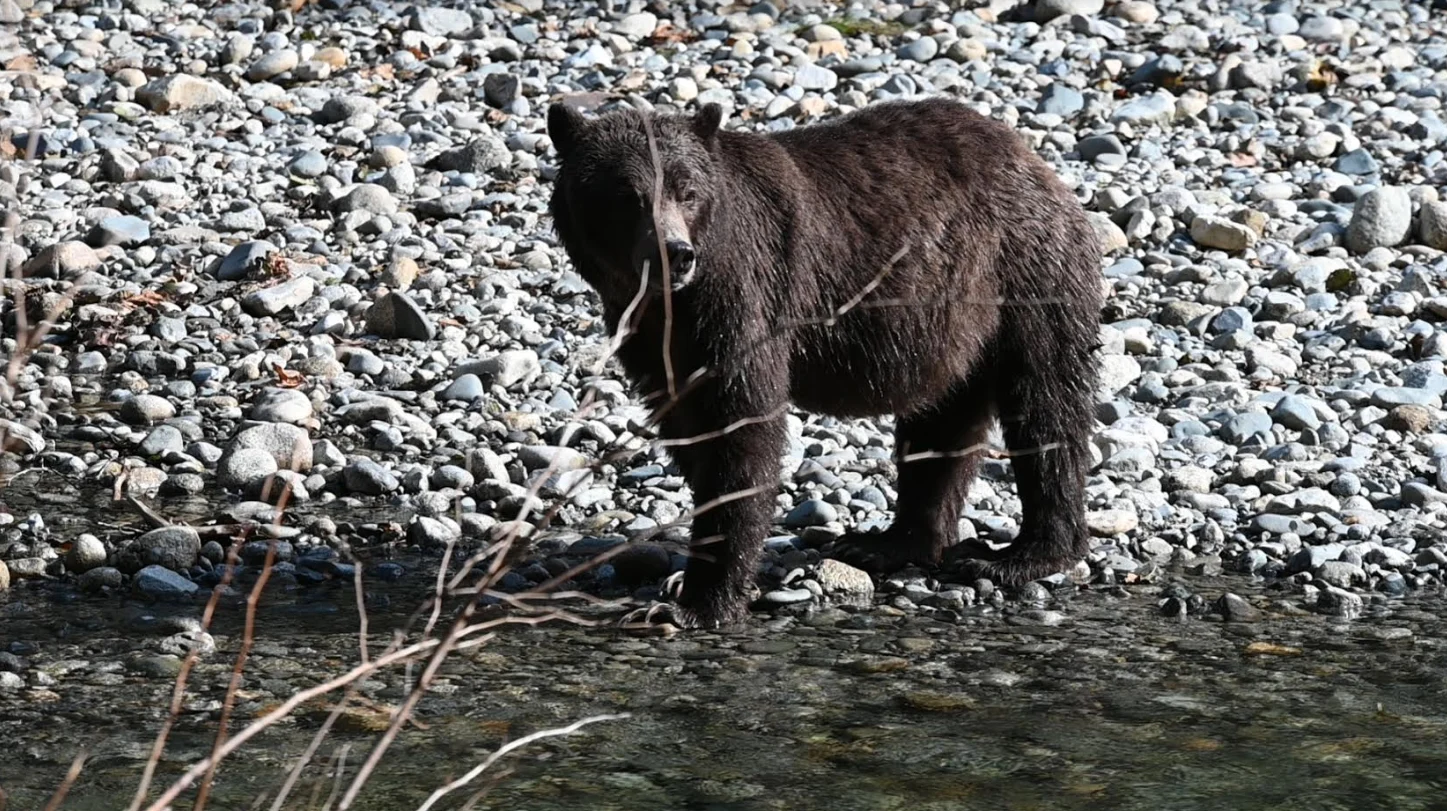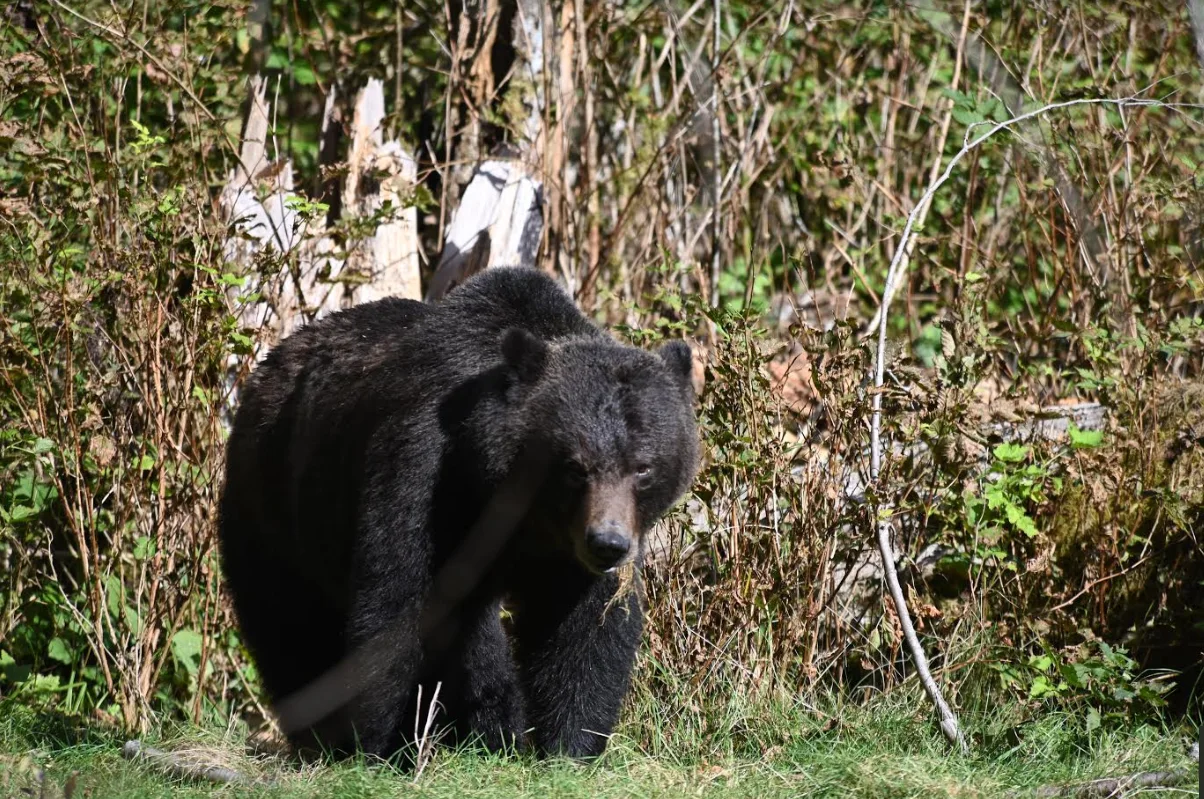
Canada's awe-inspiring grizzly bears face new challenges
Learn about Canada's grizzlies and the challenges they're facing.
It's not every day that you get to see a grizzly bear up close and personal in a safe environment, but The Weather Network had the chance to join Adventure Quest Canada and Homalco Wildlife and Culture Tours on a recent adventure.
The grizzly bear tours take you into B.C.'s Bute Inlet, an area that the grizzlies love because of the high abundance of salmon. During the tour, you visit different viewing towers and have a chance to witness these beautiful bears in their natural habitat.
At one point a curious mother bear crossed a river and came within 20 metres of the group to make sure we were no threat to her adorable nine-month-old cub. We saw bears taking an afternoon nap, bears fishing in the rivers and eating their salmon lunch, and bears playing around with the cubs. It was magical to get so close to these magnificent animals but one thing we didn't see was the thousands of salmon that usually spawn in the rivers.
According to senior guide Anthony Paul of the Homalco First Nation, the salmon run was lower than usual this year. Instead of seeing thousands of fish, they saw hundreds.
Paul told us he has seen the impact on the bears.
"This is definitely concerning because the bears aren't as massive as they usually are," he said.
"They don't have the pounds on them. They used to be almost thousand-pound grizzly bears but right now we have 500-800 pound bears."
Leigh Nelson, owner and president of Adventure Quest Canada, has been doing grizzly bear tours for over eight years.
"This year is different," Nelson says.
"The bears that we have seen in the last few weeks are not as fat as they should be. They aren't as skinny as they were at the beginning of the season ... but they are not as big as they should be this time of year. In my opinion that has to do with the salmon stocks."

WHAT'S HAPPENING TO THE WILD SALMON?
The wild salmon population has been declining over the last few years and biologist Misty MacDuffee says there are some other scary statistics we are starting to see. For the first time, there has been a decline across all five species of salmon across many areas of the coast.
MacDuffee, who is the Wild Salmon Program Director with the Raincoast Conservation Foundation, says there are several reasons for this.
"It is a cumulative issue. We have been destroying the habitat of these populations for a long time. We have undertaken heavy fishing pressure on these populations. We don't have the numbers or the resilience of these populations to combat climate change."
Climate change has also had devastating impacts on the salmon.
"Climate change affects the salmon at every life stage. It affects them in fresh water when they are eggs, it affects them when they are adolescent salmon going into estuaries and heading to the ocean, and it affects them as mature salmon in the ocean. we are seeing warmer waters in the rivers and for the second time we are seeing this phenomenon known as the blob and the last time we saw the blob in the Pacific Ocean it affected the numbers of salmon and it is likely to do that again," MacDuffee says.

So is there a solution?
According to MacDuffee there are steps we can take but some of them are drastic, particularly when it comes to Chinook salmon.
"We should be considering five-year closures, like a whole cycle of salmon. That would allow the population to rebuild."
Aside from the closures, MaDuffee believes there should be plans for habitat restoration and managing hatcheries across North America to help the wild salmon.

THE UNCERTAIN FUTURE OF GRIZZLY BEARS
MacDuffee says that if we continue down this path the grizzly bears will suffer.
"On the coast, the density of bears, the number of cubs, and the size of bears are directly impacted by their consumption of salmon. So if that resource disappears we would expect to see those consequences in the bears."

Recently, pictures came out of bears at Knight Inlet looking very skinny. Biologists we spoke with said they aren't sure if this is just the case with a certain family or if there might be other factors involved like injuries. They say bears are very food motivated and so they would find other sources before starving.
At Bute Inlet, the grizzlies have a bit of an advantage.
About 20 years ago a guest donated over $2 million to build a fish hatchery so that there are salmon that will always return to this area. A portion of every tour cost goes towards bear research and keeping the hatchery running but even with this advantage, Paul has noticed the bears trying to find other food sources; "They have been coming to camp more often because they are curious and there is less salmon this year."
These aren't the only bears that have traveled to different areas for food, but other grizzlies have taken more drastic measures. This year it was reported that Vancouver Island was seeing more grizzly bears then usual and MacDuffy believes this is because of the lack of food.
Nelson from Adventure Quest isn't entirely sure what the solution is but hopes people taking the tours will start the conversation and inspire people to make some changes that will help the grizzlies.
